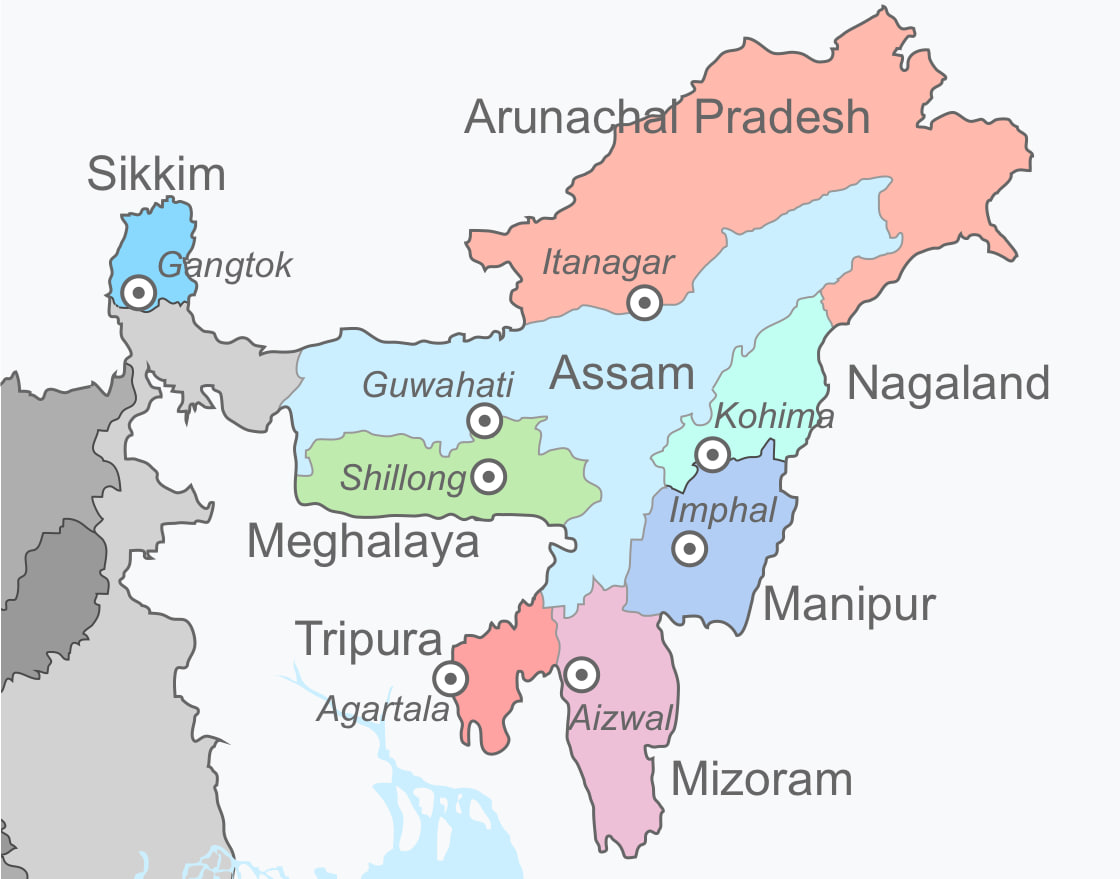Description

Copyright infringement not intended
Context: The demand of the Meitei community in Manipur for the Scheduled Tribe (ST) status has faced stiff opposition from the Hill Areas Committee (HAC) of the Manipur Assembly.
Details
The demand of the Meitei community
- The Meitei community in Manipur has been demanding the recognition of their Scheduled Tribe (ST) status for a long time.
- They claim that they are the original inhabitants of the state and that they have been discriminated against by the dominant communities.
The Reaction of the Hill Areas Committee
- The demand has faced stiff opposition from the Hill Areas Committee (HAC) of the Manipur Assembly, which represents the interests of the hill tribes.
- The HAC recently passed a resolution rejecting the Meitei's claim and asserting that granting them ST status would disturb the existing balance of power and resources in the state.
What next?
- The Meitei community has expressed its displeasure over this resolution and has decided to take legal action against the HAC.
- They have said that they will file a contempt petition in the Supreme Court, accusing the HAC of violating its earlier order to maintain the status quo on the issue.
- The Meitei community hopes that the court will intervene and direct the central government to expedite the process of granting them ST status.
.jpeg)
Hill Areas Committee (HAC) of the Manipur Assembly
About
- It is a constitutional body that represents the interests of the tribal people living in the hill districts of the state.
- It was established under Article 371C of the Indian Constitution, which grants special provisions for the administration of Manipur.
- It consists of 20 members, out of which 19 are elected from the hill constituencies and one is nominated by the Governor.
Powers
- It has the power to make recommendations on matters relating to the welfare and development of the hill areas, such as legislation, budget, schemes and projects.
- It has the power to review and monitor the implementation of such matters.
Significance
- The HAC plays a crucial role in ensuring that the rights and aspirations of the tribal people are respected and protected.
- It acts as a bridge between the hill and valley communities, fostering harmony and cooperation.
- It strives to promote the socio-economic and cultural development of the hill areas while preserving their distinct identity and traditions.
Meitei community
- The Meitei community is one of the largest and most influential ethnic groups in Manipur.
- They trace their ancestry to various clans that inhabited the Imphal Valley region in ancient times.
- They also claim to have a close kinship with the Bamar and Shan people of Myanmar, who share some linguistic and cultural similarities with them.
Language
- The Meiteis speak the Meitei language (also known as Manipuri), which belongs to the Tibeto-Burman branch of the Sino-Tibetan language family.
- It is one of the 22 official languages of India and the sole official language of Manipur.
- Meitei language has its script, which is derived from an ancient Brahmi script and has been in use since the 11th century.
- The Meitei language has also been influenced by Sanskrit, Bengali, Hindi, and English over time.
Religion
- The Meiteis have a complex and diverse religious landscape that reflects their historical interactions with various faiths and traditions.
- The majority of Meiteis are Hindus, who follow a syncretic form of Vaishnavism that incorporates elements of their indigenous religion, Sanamahism.
- Sanamahism is an animistic faith that worships nature and ancestral spirits.

Handicraft
- Meitei handicraft includes various items such as pottery, basketry, weaving, wood carving and metalwork.
- The handicrafts are made from natural materials such as bamboo, cane, clay, cotton and silk.
- Some of the famous Meitei handicrafts are Phanek (skirt), Wangkhei Phee (shawl), Moirang Phee (scarf) and Khwang (basket).
Arts
- Manipuri dance: A classical dance form that originated in Manipur and is based on the themes of Vaishnavism (a Hindu sect that worships Vishnu). It is characterized by graceful movements, intricate costumes, and rhythmic music.
- Thang-ta: A martial art form that involves the use of a sword and spear. It was developed by the Meitei warriors as a means of self-defence and warfare.
- Pena: A musical instrument that consists of a bamboo rod with a coconut shell at one end and a horsehair string at the other. It is played by plucking the string with a bamboo plectrum while singing folk songs or ballads.
- Shumang Lila: A form of theatre that is performed on a circular stage in an open-air setting. It involves comedy, satire, social commentary, and improvisation.
- Pukhrambam pottery: A form of pottery that is made by hand using clay from river banks. It is decorated with geometric patterns or floral motifs using natural colours.
Must Read Articles:
Criteria to define STs: https://www.iasgyan.in/daily-current-affairs/criteria-to-define-sts
|
PRACTICE QUESTION
Q. What is the name of the martial art practised by the Meitei community?
A) Thang-ta
B) Silambam
C) Kalaripayattu
D) Gatka
Answer: A
|

https://epaper.thehindu.com/ccidist-ws/th/th_delhi/issues/34697/OPS/GP6B694QO.1+GPUB69MHJ.1.html











